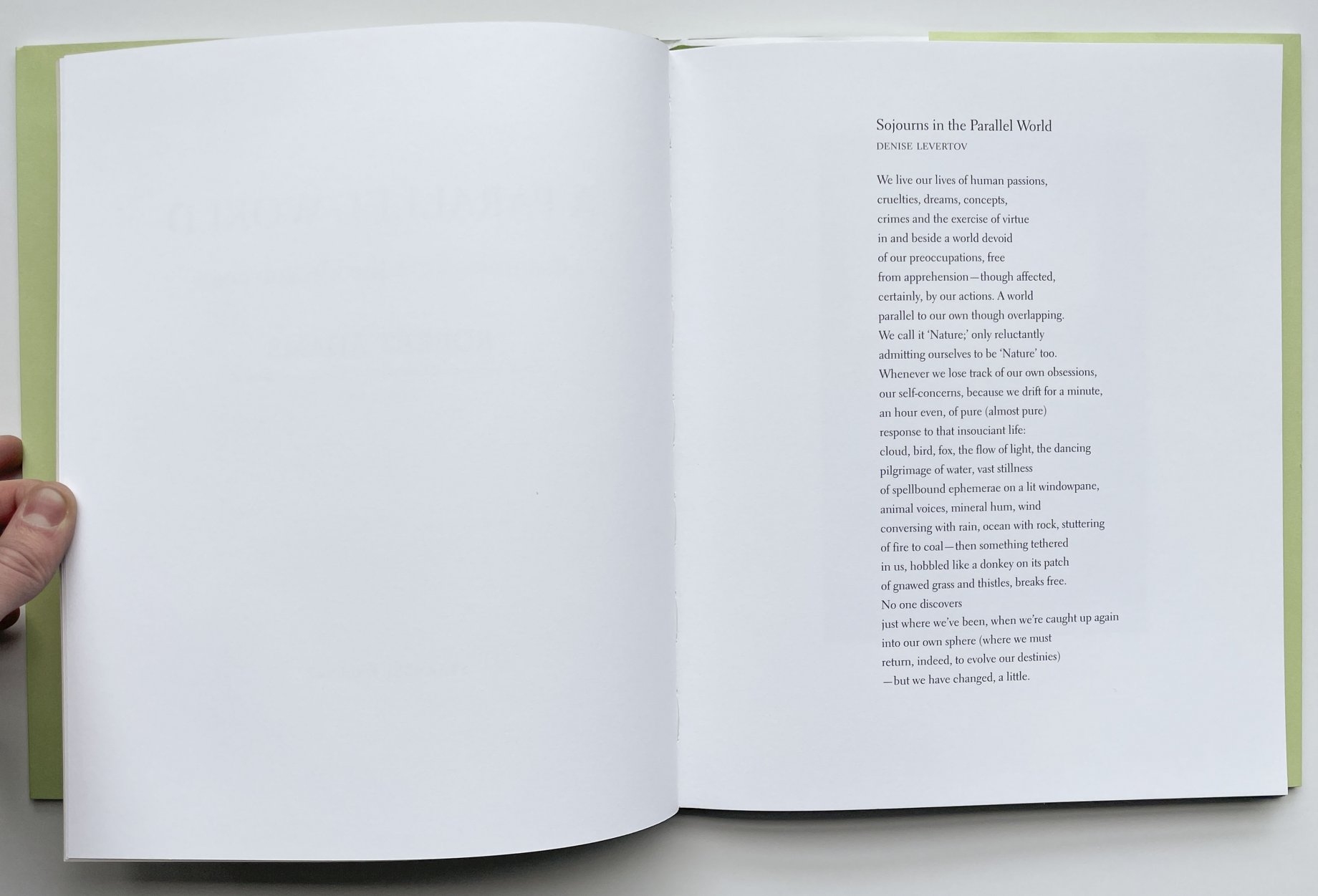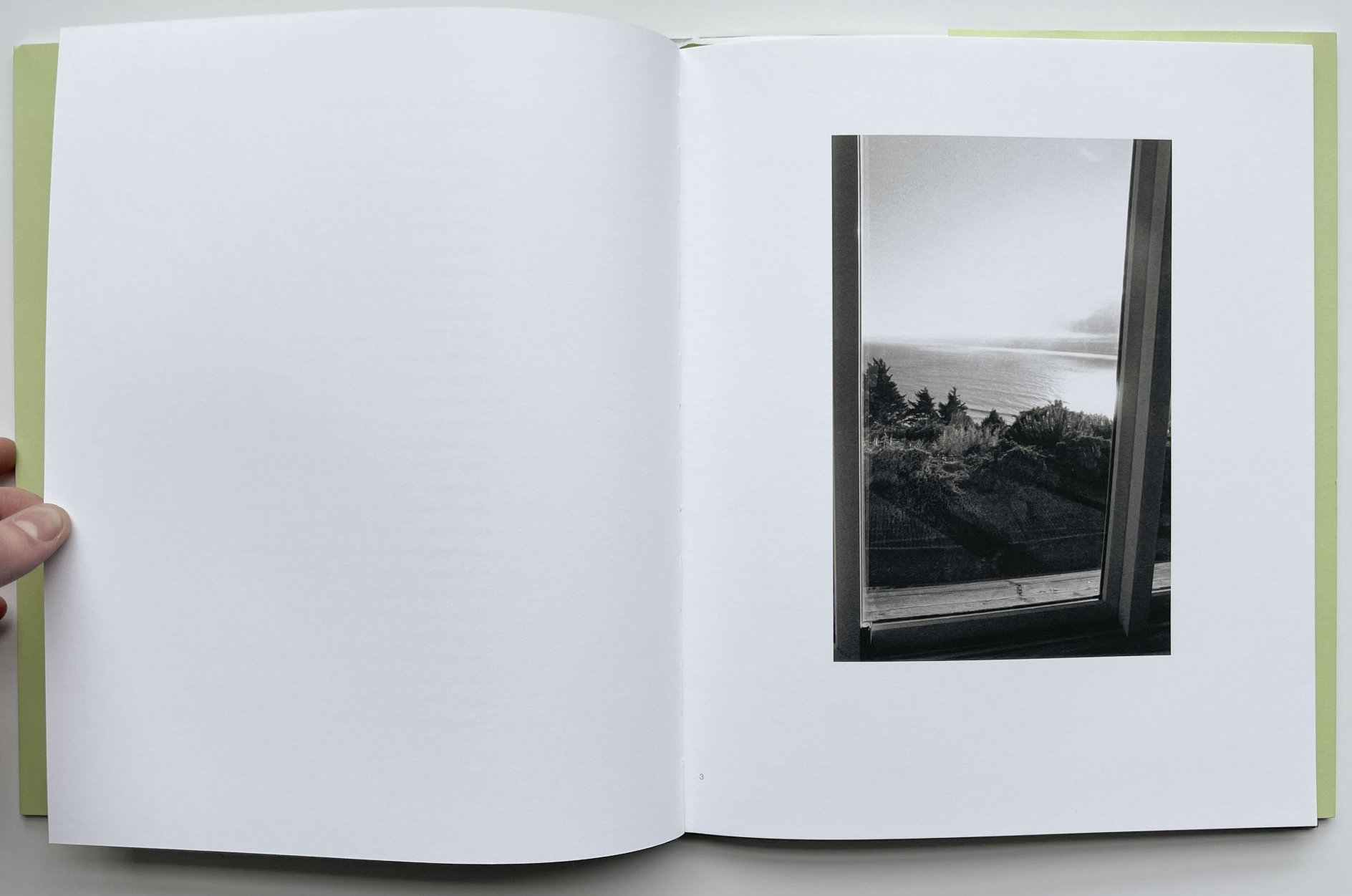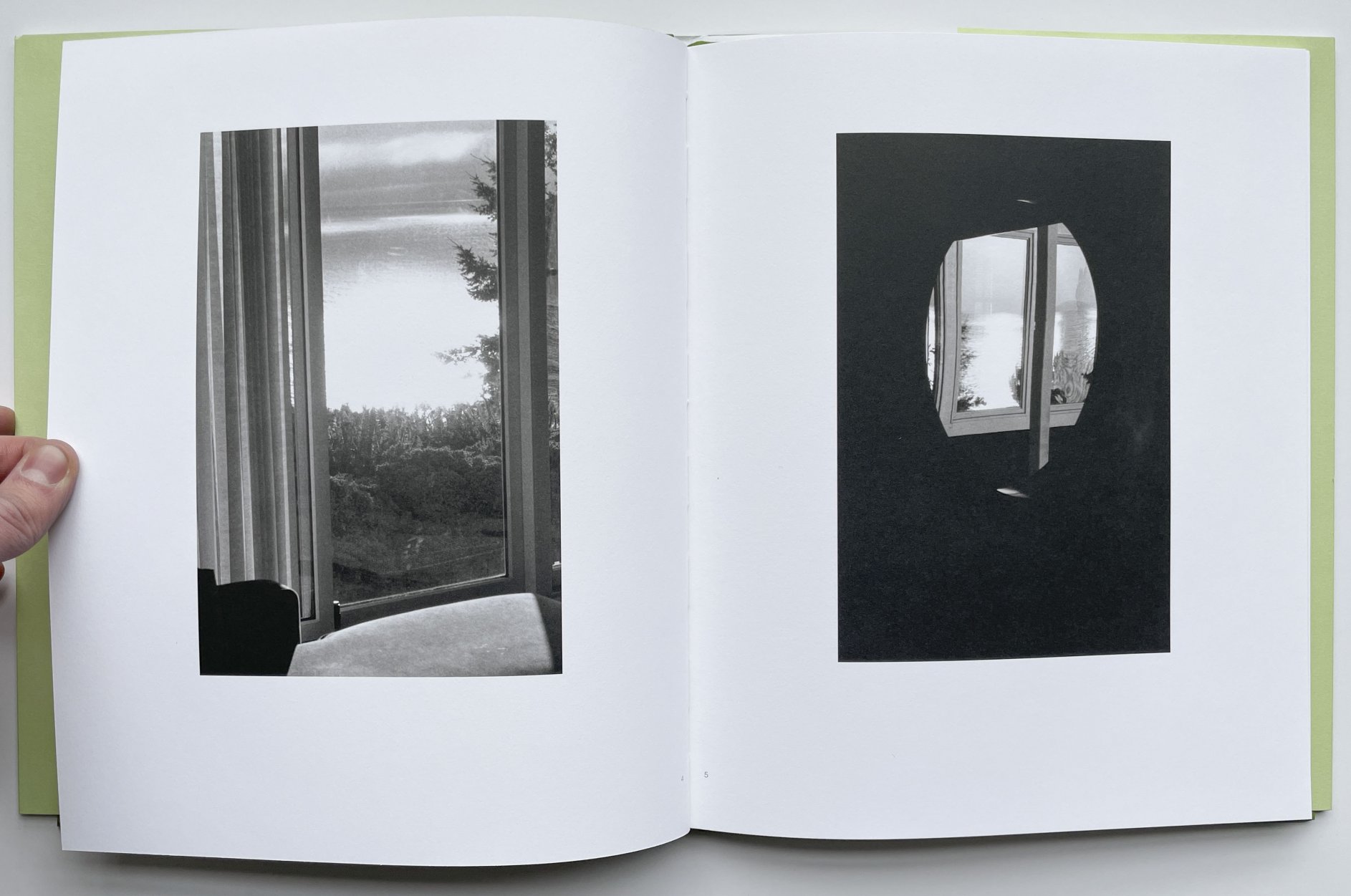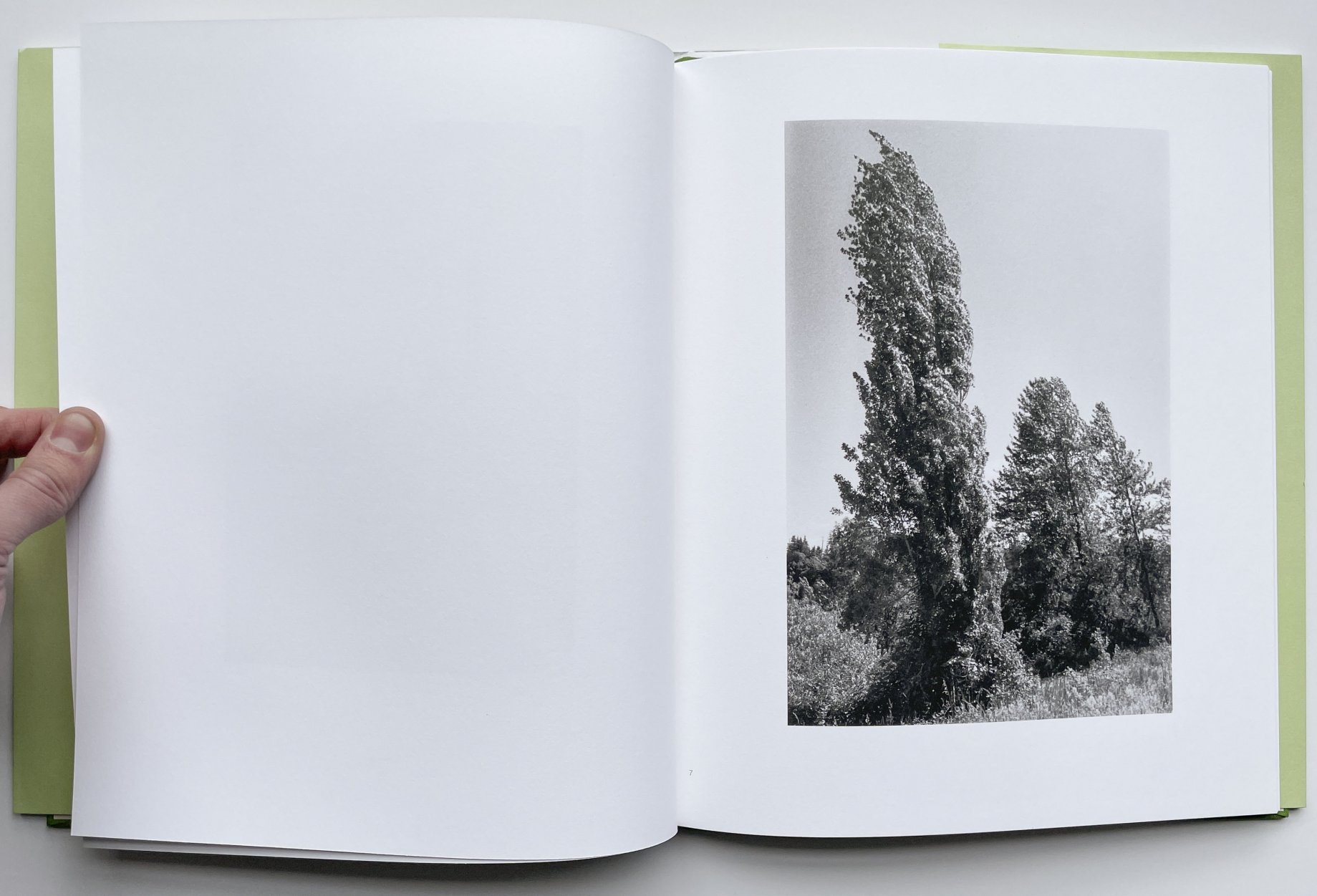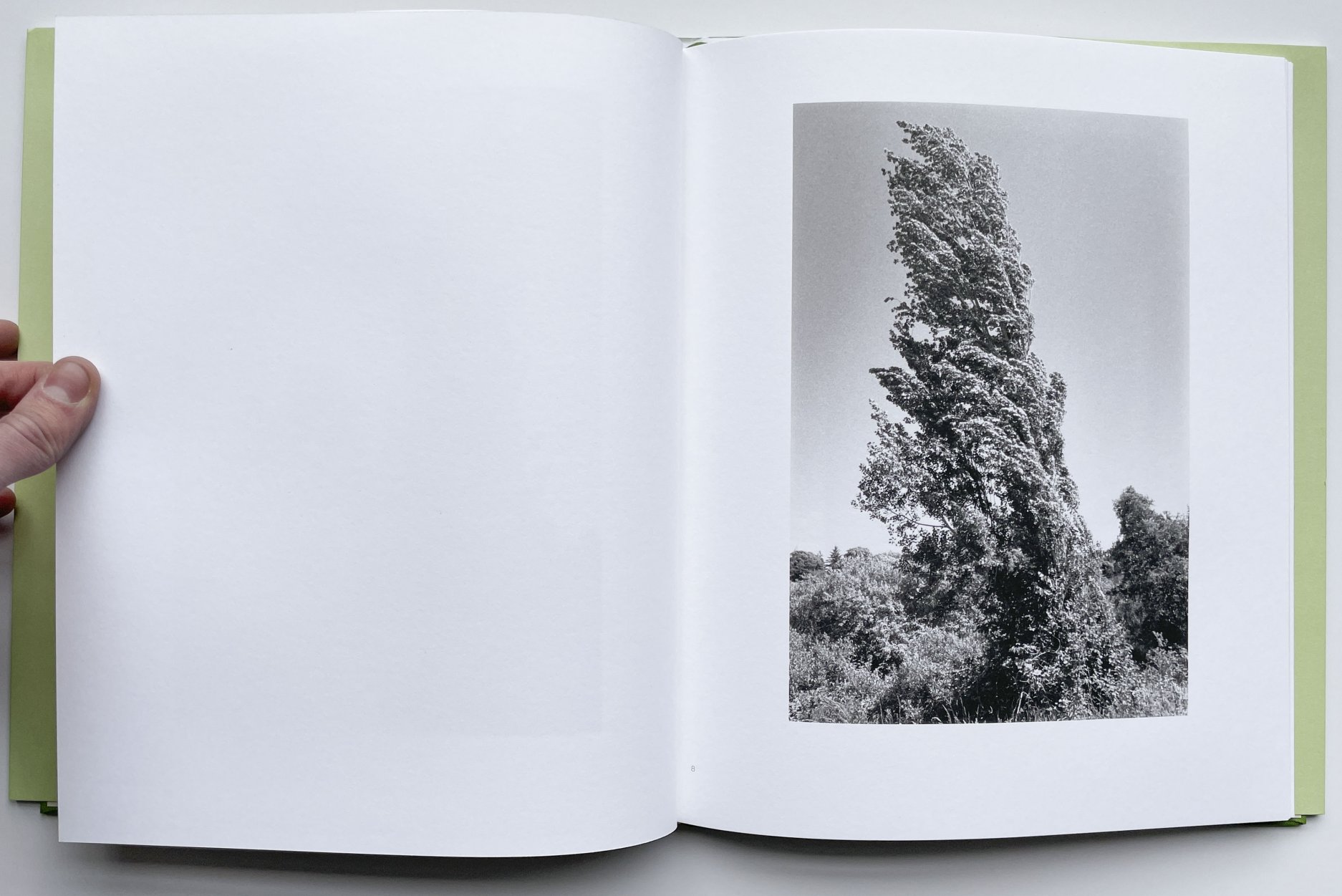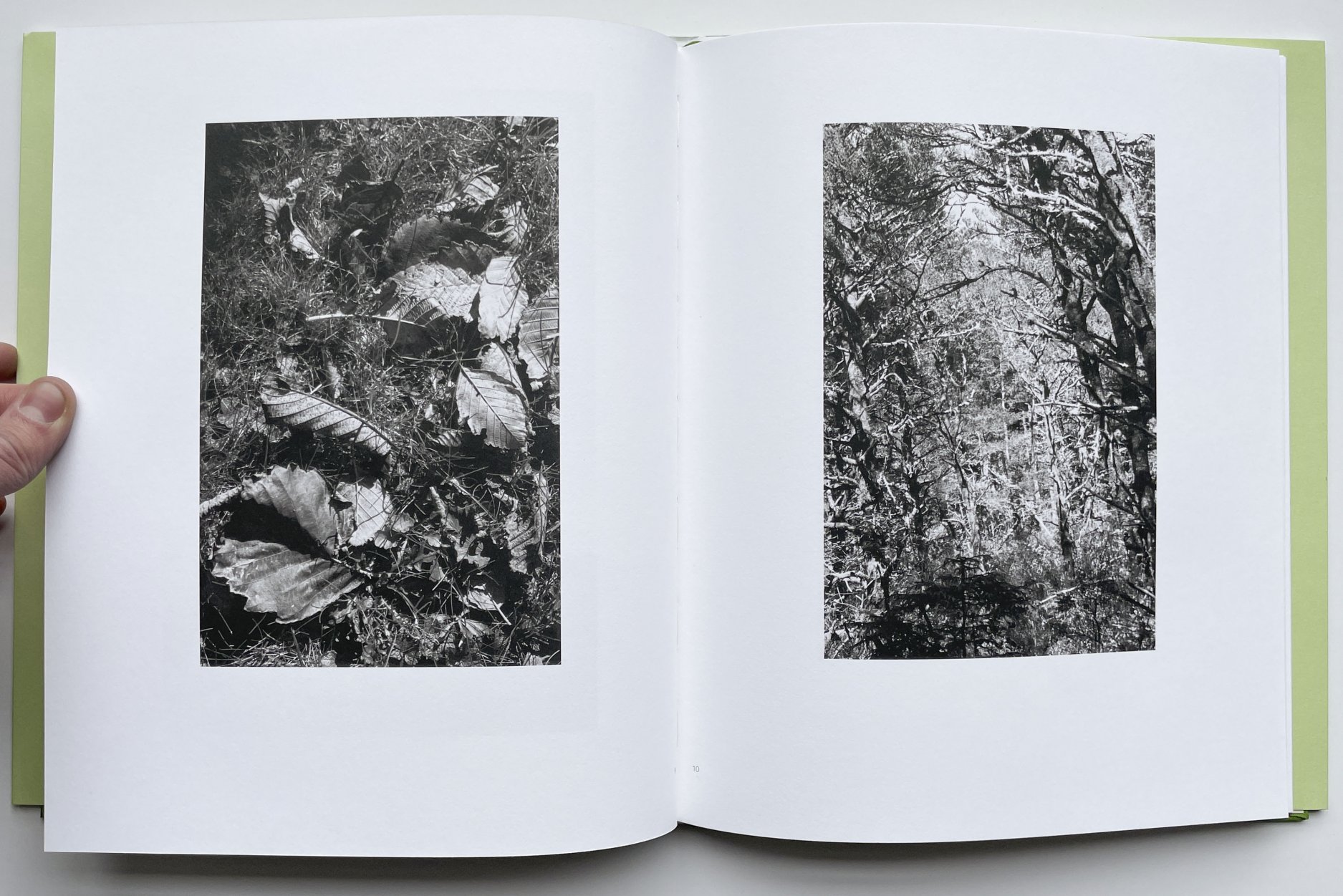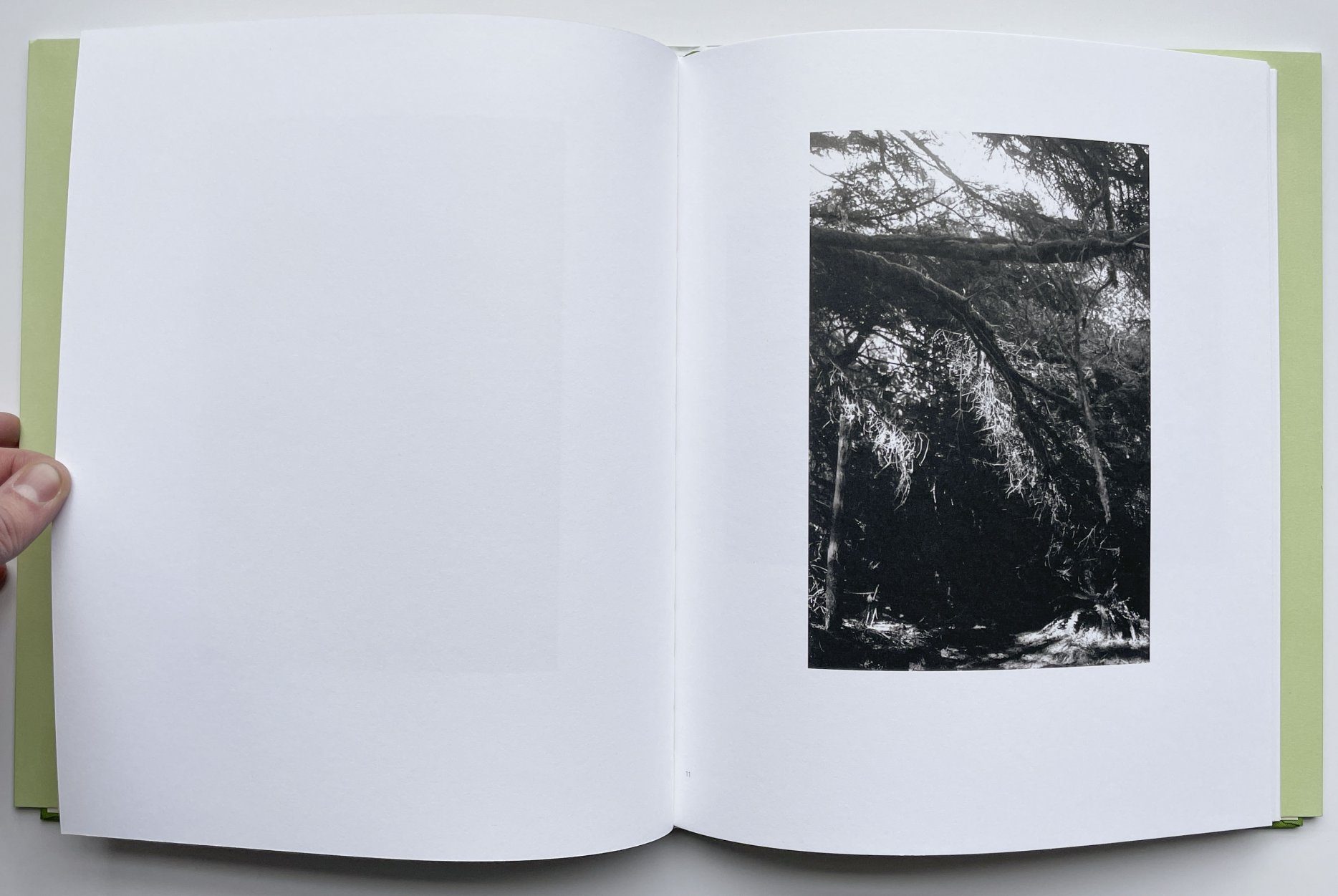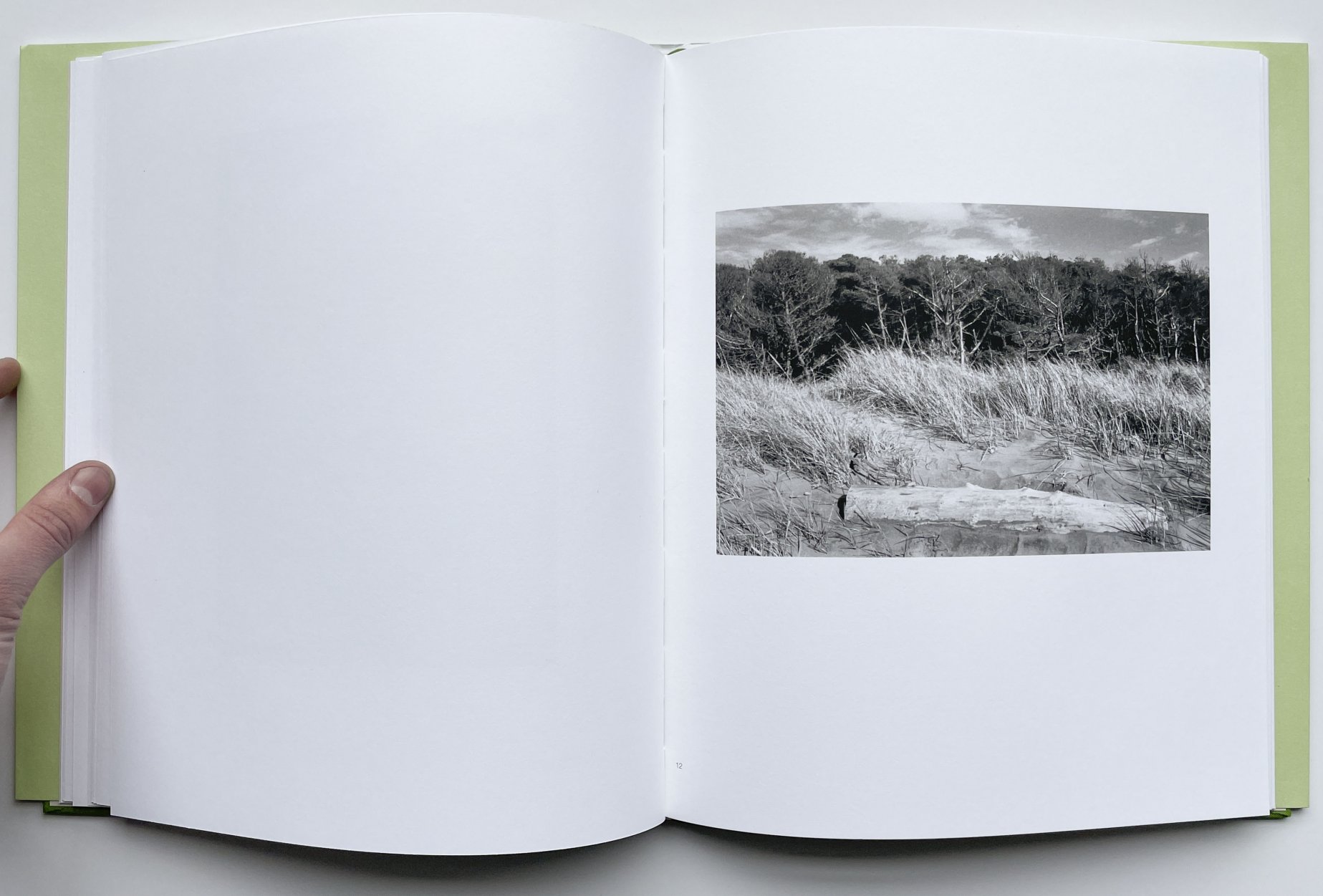In this newsletter:
- Cosmic Fishing with Rebecca Bengal: Time Travel
- Weegee in Minneapolis by Alec Soth
- Recently Received: A Parallel World by Robert Adams
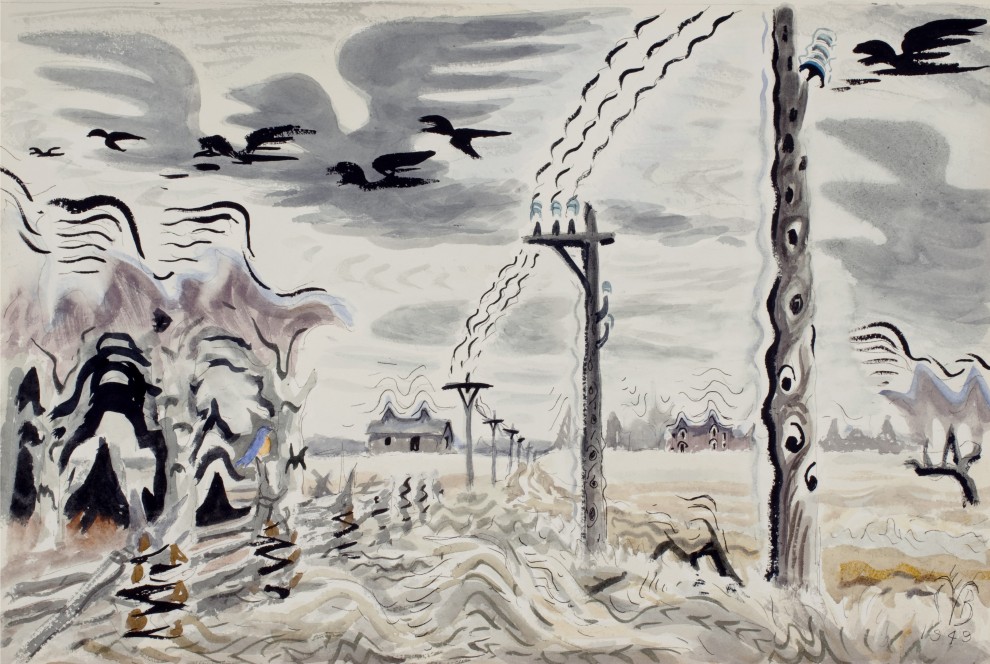
Cosmic Fishing with Rebecca Bengal: Time Travel
So I didn’t buy the glittery plastic 2021-shaped sunglasses in the Albee Square dollar store. Fire, water, ritual — by all means, whatever it takes to get to the other side. But what seemed to flip suddenly, wrenchingly upside down won’t disappear in an instant.
This was the year time turned liquid. By which I mean, the flimsiness of its container became utterly, unavoidably transparent. Became so shapeless it just oozed everywhere. Became clear that the story devised to tell it did not hold. Grief and fear, anger and panic shortened and expanded the hours, blurred the lines between them altogether. Days were Jupiter-short and simultaneously endless — news arrived constantly, “breaking news,” relentlessly reordered the collective understanding of the world over so many instances in the space of 24 hours, that what once amounted to a day seemed to require a dozen more sunsets. A decade passed in a month and yet the horrific theft of an entire life took just eight minutes, forty-six seconds. Out of nowhere came feelings that couldn’t be broken into even-numbered increments. The ruler for measuring memory and experience was woefully inadequate — operating not in weeks but on some unseen universal algorithm, giving weight to larger, significant moments, and shrinking non-events to fleeting flashes.
Perhaps untangling from linear time could be its own escape hatch — terrifying maybe, but liberating, more accurate. Perhaps this is the way to move on from 2020. To learn to live with time. To learn to travel through time when it’s almost impossible to travel anywhere else.
To see ahead to the future I suggest trying to look at the past. For me, that’s meant hundred-year-old novels, ancient music, archives of old photographs, maps. And lately, a couple of diaries.
***
Bear with me, this isn’t a new obsession. I’m the nerd who geeked out over The Sound and the Fury in high school, saw its fragmented structure as an affirmation of narrative; not realizing then how much the modernists were writing themselves out of their own pandemic as much as out of war. Once, I exasperated a boyfriend who I’d asked to describe how he envisioned time. Visually, what do days, months, years, decades, centuries look like to you? I was disappointed in his answer — an artist who shut his eyes and still only saw calendar pages?
Mostly I was disappointed that he didn’t understand why my question was important to me. And maybe I couldn’t articulate precisely then exactly why and how I had formed this image for myself, but I could describe, in detail, the geometry as I had instinctively seen it in my head for as long as I could remember: a picture that made space for both linear and cyclical time. And how minutes and years grew and morphed and bent. How they spilled out. How extremely personal instances and memories from my own life imprinted themselves onto the wider historic calendar as I understood it, how linear and cyclical time overlapped, intertwined, fused together and diverged. How some decades were also the shape of the hallways of the public schools I attended or the free hardware store calendar nailed to a cabinet in the kitchen of one set of grandparents or the tearaway cartoon calendar propped up by my other grandparents’ phone. How the historic calendar was always getting crossed out, rewritten, corrected. That boyfriend had laughed at my question. Can I just say now at the beginning of 2021, I feel a little vindicated.
Even though, at first, back in the spring, my picture of time began to rapidly disintegrate too. My interior image of the year evaporated abruptly — just fell off a cliff, the months ahead a whiteout. I was subletting a tiny motel suite by the Atlantic Ocean when the pandemic struck. I counted months in full moons and grew to depend on the daily sight of a pod of dolphins swimming south, a voyage with clockwork regularity. Until the morning they suddenly shifted course, did a 180, went north. What did they know. But just as I have learned to take cues from animals when storms are coming, I turned direction too.
“The great shipwreck of time,” as Luc Sante called it in the title essay of his book Maybe the People Would Be the Times. “All the contents of the previous decades and centuries are heaped up on the sidewalk for us to pick through and repurpose and discard.” He is talking music, talking 1975. The book was published in 2020.
Eventually I stopped being able to envision the future at all. Eventually I started rooting around into the past, sifting through the discards, looking for new escape routes.
***
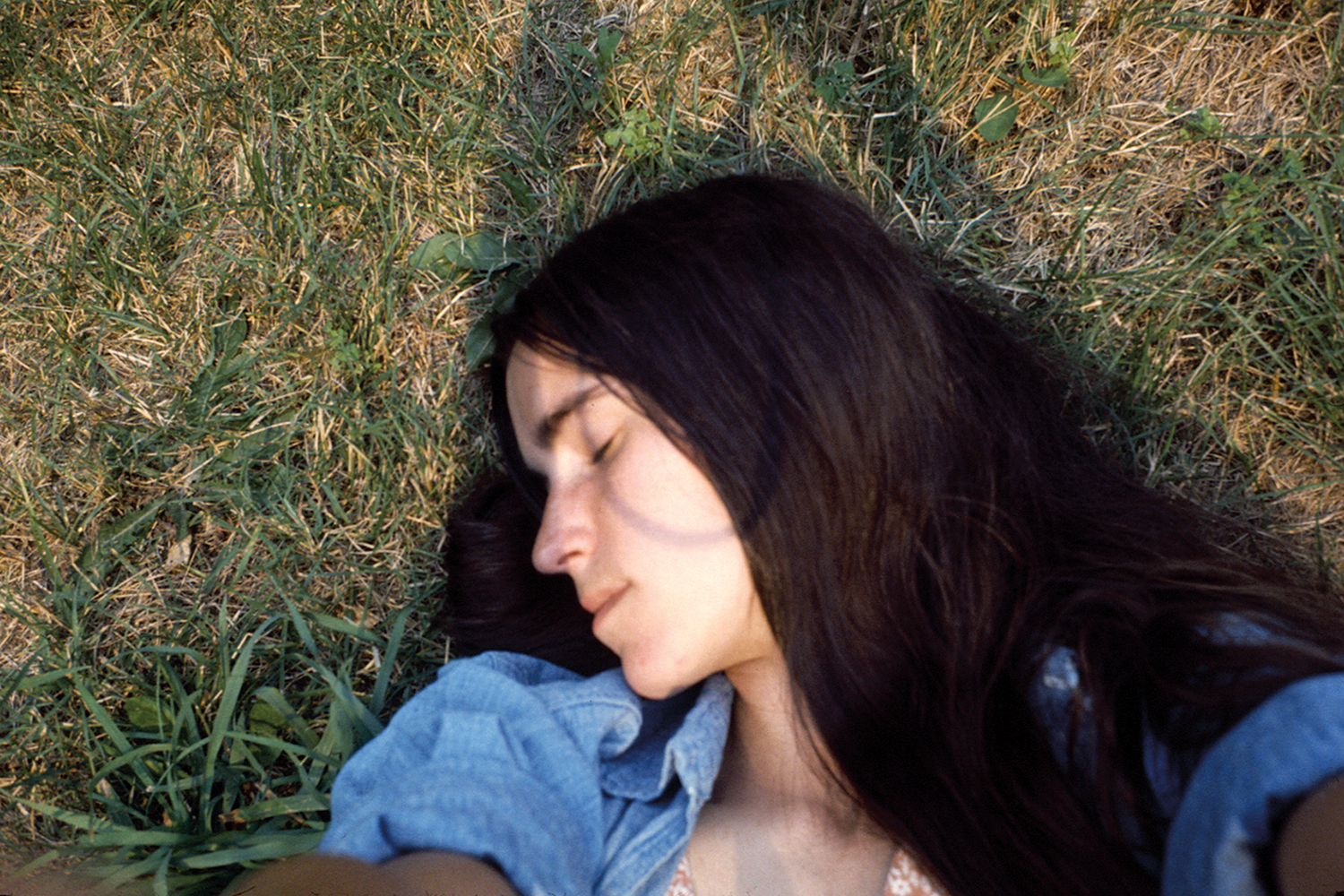
If time is liquid, is it a matter of finding the right container to hold it? The poet and conceptual artist Bernadette Mayer chose as her container a month. In July 1971 she dedicated herself to an experiment: she’d shoot an entire roll of 35mm slide film every single day and keep an intensely detailed journal. What amounted to an intensely conceptual exploration of time is a project she named Memory, first exhibited at Holly Solomon’s first gallery at 98 Greene Street, New York City and then in many more containers, other galleries, a 1975 book long out of print, and a new edition, aptly published in 2020 by the wonderful Siglio Press.
In physical form, on gallery walls, Memory amounts to more than 1,100 snapshots and six hours of taped recordings. The pictures measure fifty-two inches high, thirty-six feet long. “I think it’s a short space of time, but it takes up a lot of room, depending on how you store it,” Mayer writes in an essay accompanying the new edition. In portraying memory, Mayer reckons with time.
Inevitably Memory offers imagined nostalgia and a predictive sense of the way so many people impulsively document the ephemera of their lives — it’s also a little like the horror of opening your phone, overwhelmed and maybe annoyed at the accumulation within, but also grateful for the odd details that emerge, the accidental arrangements, like stories within the larger story of thirty-one days. Visually Mayer captures the inherent endlessness of summer, for her a month that swung between Manhattan and the Berkshires, where her then-boyfriend, the longhaired figure seen wandering naked into amber-bulbed rooms, was directing a film. Summer in the city, summer in the country, the roads and gas pumps in between, and dark earnest self-portraits staring in the mirror.
Each segment takes on different shades: a whole day tinged in blue, another in green and brown, another in lavender. Search as you might for significance in the snapshots, the only equalizer is the larger bounds of the rules of the month itself: A game of pool looms as large as a New York City sidewalk, as a tree, a plate of food, a rumpled bed, a hammock, a hug, a blur, laughter. The accompanying text is a river of Mayer’s riffing — as many thoughts and actions of the day as she can fit, an intriguingly gauzy and tough and rhythmic run-on sentence.
“So much is left out,” Mayer writes in her essay, revisiting her own work: “emotions, thoughts, sex, the relationship between poetry and light, storytelling, walking, and voyaging to name a few.” The omissions and impressions form a repository of raw material, but also strange, singular whole, calling into question how we collect memory, what falls away, what lingers — how malleable it all is, the infinite possibilities of stories within stories.
***
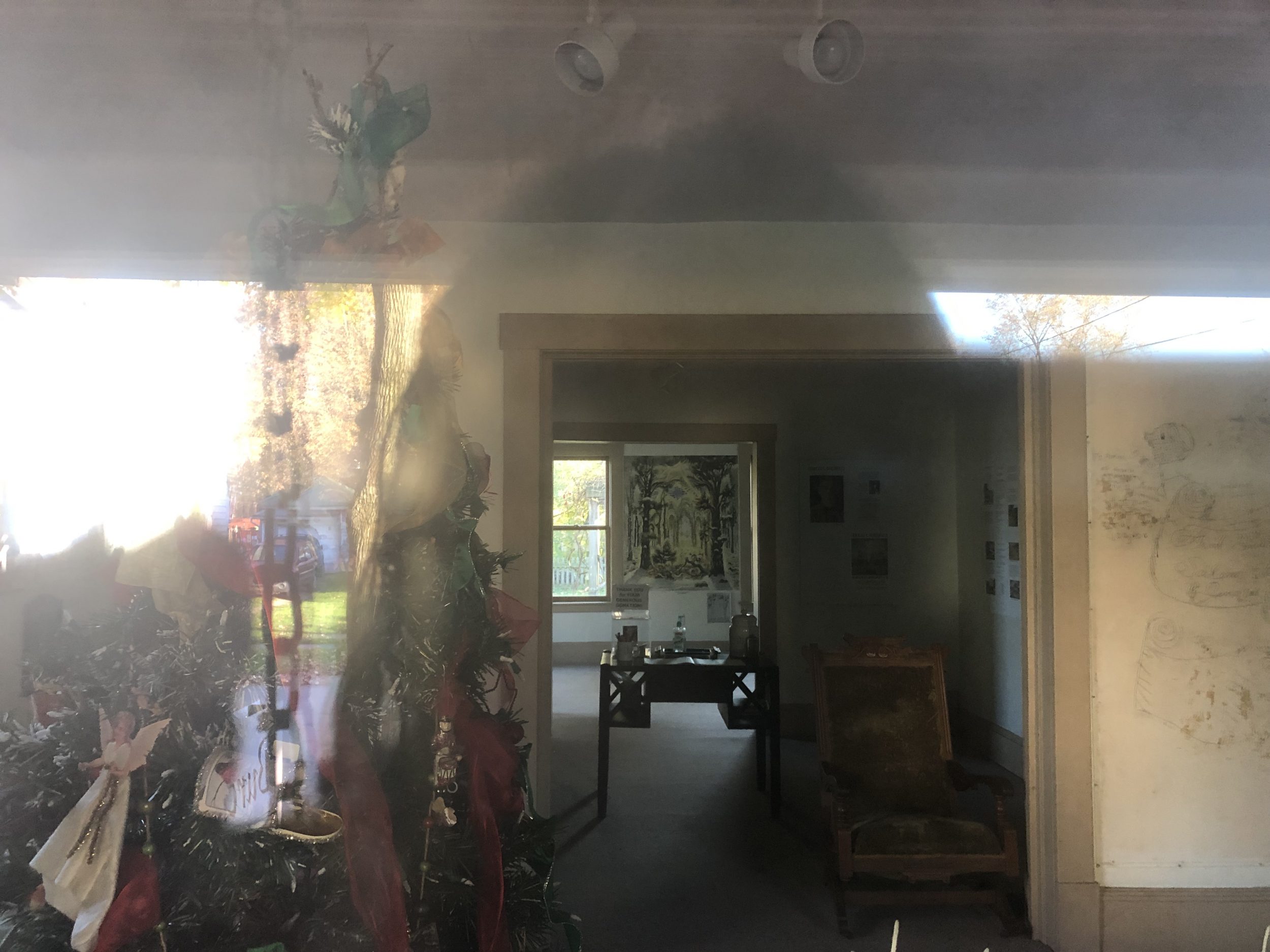
Early last year, as I wrote in this space, the fifty-year-old and hundred-year-old paintings of Charles Burchfield, with their scalded scenery, ecstatic whorls of color and light, swipes of clouds, smoking freights, smeary plants were some of the first and last works of art I saw in a gallery in 2020 — dramatic, lonesome omens. I got hooked on Burchfield’s gothic and hallucinatory landscapes years back. I imagine the January exhibit was intended to time with the season — Burchfield’s spring and autumn works are transcendent but the moody, solitary psyche of his paintings is right on time for winter. Last year they inevitably ushered in an even longer, darker season. Now, knowingly headed into another locked-down winter, Burchfield remains my patron saint of artistic isolation.
Geographically he was trapped. Burchfield lived almost all of his life (1893–1967) in rural Ohio and Buffalo, New York, where a museum devoted to his works remains. I have always thought it would be an interesting experiment to pair them with the paintings of his friend Edward Hopper: the spiritual material is roughly the same, but Burchfield removes any humans from his woods, streets, houses. He wrote on the backs of his canvases and he kept a daily diary, which is as rapturous and strange as his paintings and which, right now, delivers a particular solace. For much of the pandemic, fragments from Burchfield’s diaries are the first thing I see in my Instagram feed: a chance to look through hundred-year-old eyes.
They are taken from Burchfield’s collected journals, which I own in a 1993 edition that contains some seven hundred pages, rips up the chronology entirely, a presentation of timeless solitude. Flipping between teenage and middle-aged and old-man Burchfield, it divides fragments of his journals according to themes (nature as manifestation, nature as self, dreams and fantasies, crisis, love, nostalgia, the “art world”) — psychedelic visions of ravines, nostalgic walks through a cemetery that turns quickly troubling (the realization that prisoners are buried in an unmarked grave) but mostly, melancholy and unashamedly joyous and earnest descriptions of clouds, skies, grasshoppers, birds, streams.
If I kept a diary I would include an entry from November 7, 2020, a detour. Driving halfway across the country on the day Biden was declared president, in the midst of a trip I was keenly aware I would not be able to repeat for a good long while, I took a break from a highway littered with toxic political signs and I sat on the porch of Burchfield’s childhood home in Salem, Ohio, looking at the trees and street as I imagined he had; staring into the window at the paintings inside. I looked over the fence at the wintering plants and leaves in the backyard; walked through an old graveyard he must have wandered through too. Half of the paintings he made in his entire life were done within two years in that town, 1915 to 1917, stunning to realize — a manic and definitive period of productivity. But then again: What is time?
Here is Burchfield, from two December entries a hundred years ago:
A.M. – To Bentley’s & Farquhar’s woods walking – a fluffy fall of snow-flakes from the East – sun a pale white spot – Immense silence of woods – the peter-bird song – nut-hatches – Religious silvery-gray gloom of beech-grove.
The star snow.
P.M. – The sun a blood red – with a shaft of yellow light shooting up from it – sinks behind the gray-black houses.
In fields in front of Bentley’s for walk in the December Dusk – S.W. the sky a rich neutral O, the snow startling white, houses “lost” in dense [snow].
Charles E. Burchfield, Journals, December 16, 1917
And this:
I prophecy for me a glorious spring –
Charles E. Burchfield, Journals, December 14, 1915
Weegee in Minneapolis
As I’ve gotten older, the proximity of history has moved closer. As a teenager in the 80’s, WWII might as well have been the Middle Ages. Now a few decades feel like a drop in the bucket. In 2020, I began to find this encroachment of history comforting. Things are bad, sure, but not long ago they were worse.
When the election news hit its zenith this fall, I started to tune out. Instead of waking up to Twitter, each morning I would read separate editions of the local paper from 50, 75 and 100 years ago. This wasn’t a nostalgia trip. I skimmed the stories of rescued kittens, but I devoured the depravity: child murderers and peeping toms, dog poisoners and mail bombs.
It was important to me that these stories were local. Living in Minnesota, there’s a tendency to Lake Wobegon-ize the past. Reading these old stories brought to mind the more important local legacy of the Coen brothers. There’s always been a darkness here.
In October I started an Instagram feed of some of my newspaper finds. But I’m saving the juiciest nuggets for a live performance I’m doing with the musician Dave King on January 30th. The title of our project, The Palms, comes from one of these favorite newspaper discoveries. In 1950, Weegee visited Minneapolis for one night as part of a cross-country promotional tour for the film The Sleeping City. In each town, he would shoot after midnight and publish the photos in the local paper. This was the spread he published in the Minneapolis Star on October 11th, 1950:
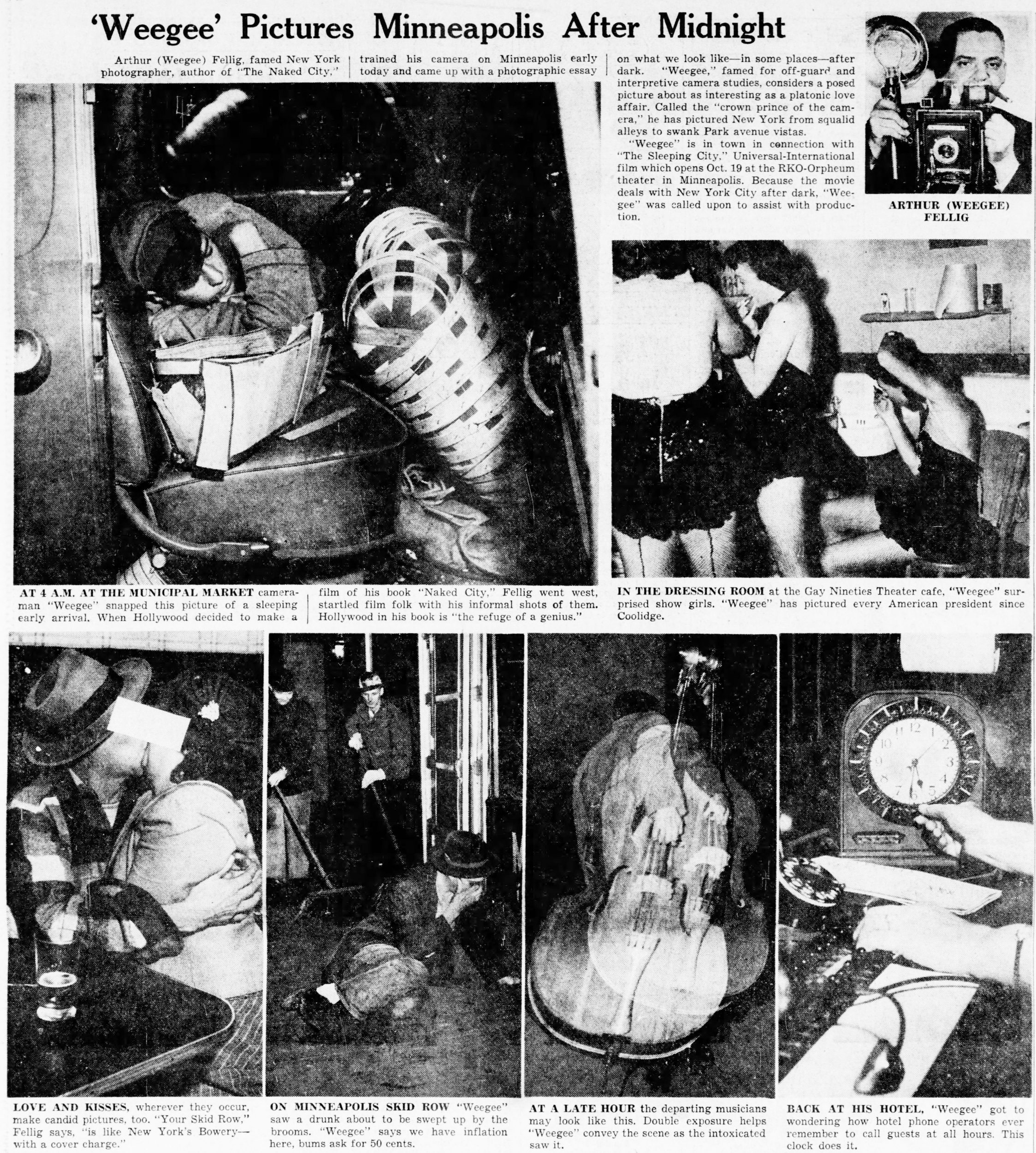
My favorite of these photos suffered unfortunate cropping. Here’s the full version:
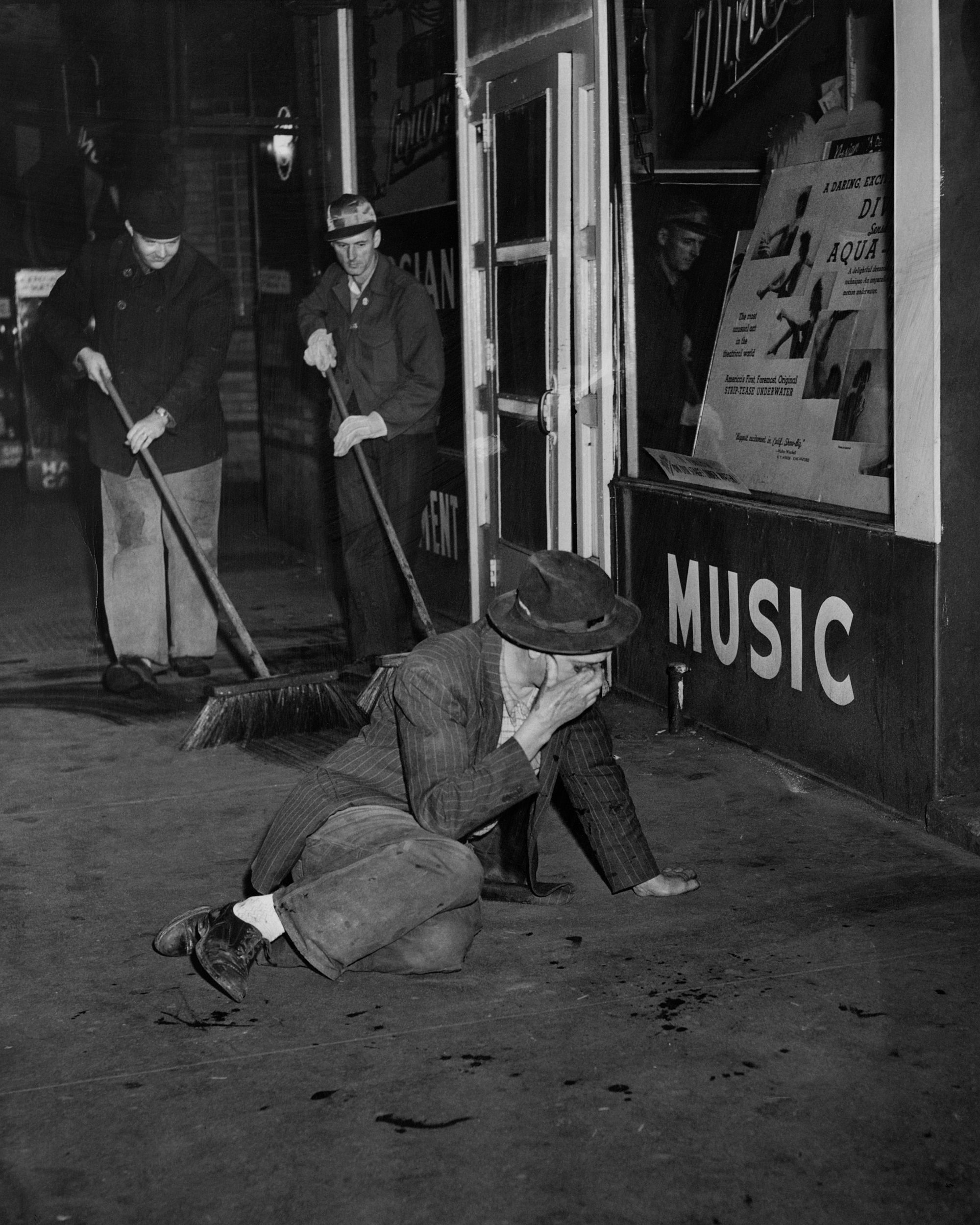
I came to learn that this photo was made in front of the Persian Palms nightclub. The underwater stripper Divena was performing the night Weegee was there. I did some more digging and learned about the huge variety of acts at the Persian Palms. I like the idea of my performance with Dave being on the lineup:
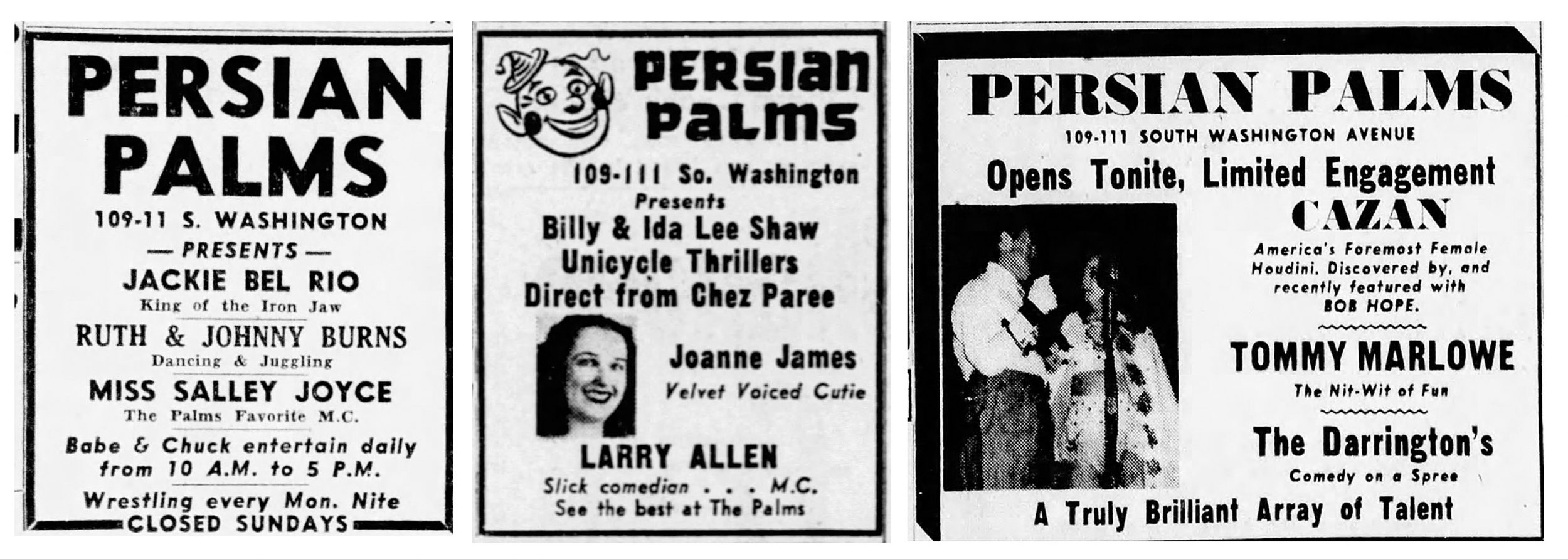
Weegee had similar ideas. “With a little time on my hands, I now worked up a night club act with my funny color slides,” he writes in his autobiography, “the Village Vanguard thought it a novel idea.”
Weegee was a showman and a hustler. During The Sleeping City PR tour, he made extra cash by doing product placements. “Every time I took a night club shot, I saw to it that a bottle of Schlitz was on the table and facing the camera,” he wrote. While he didn’t manage this in Minneapolis, he did find an extra way to make money. In the Weegee archives, I found a photo of him at the Minneapolis Star darkroom:
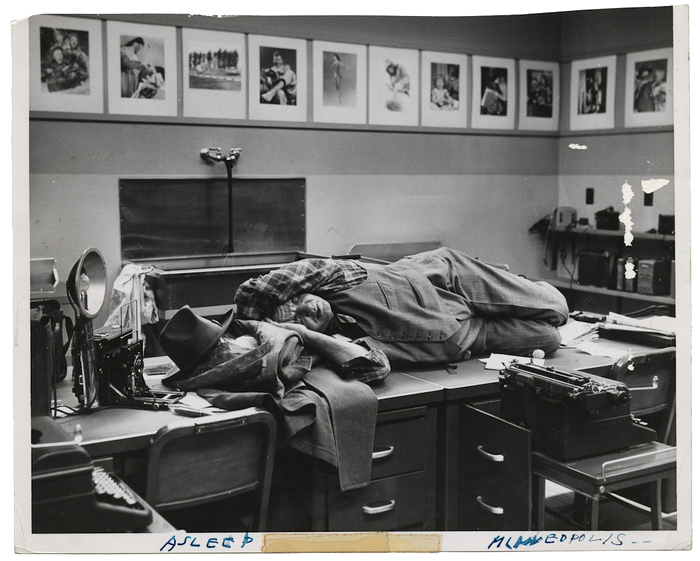
“As I was waiting to go on at one of the local television stations, I fell asleep,” Weegee writes in his autobiography, “When I woke up, the television camera was on me…I did my spiel for The Sleeping City, put in a plug for Muntz Televisison, and got out of there.”
What I love about Weegee was his skid row joie de vivre. Murder and mayhem didn’t bother him, nor did an abundance of self-promotion. “What may be abnormal to you is normal to me,” he writes, “If I had to live my life over again, I would do it all the same way…only more so.”
In that spirit, I’m going to my unashamedly pimp my performance of The Palms. Purchase your tickets HERE – and be sure to enjoy it with an ice-cold bottle of Schlitz.
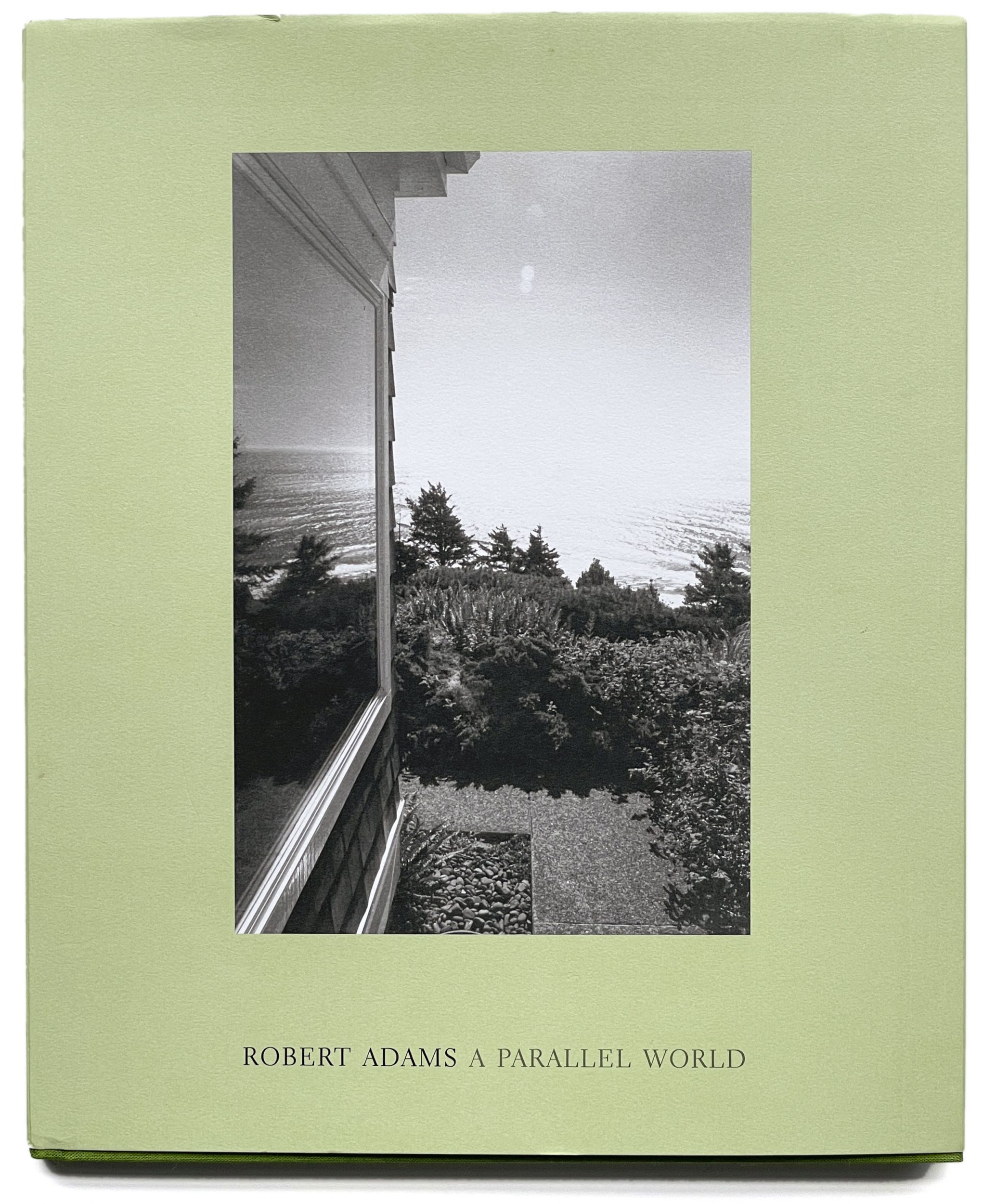
Recently Received: A Parallel World by Robert Adams
When speaking of my photographic influences, I often describe Weegee as the devil on my shoulder barking directions to the debauched human carnival while Robert Adams whispers in the other ear. Most often his quiet instructions are poetic quotations. His most recent book, A Parallel World, begins with this quote by Czeslaw Milosz: “The sublime…persists, it renews itself in every generation.” But the book takes its name from a poem by Denise Levertov that Adams shares in its entirety. The ten photographs that follow this poem are as strong as any sequence Adams has published:
I’ve been watching too many Nordic crime shows, but after the window onto the sublime leads us outside into the dark woods, the last photo looks like a dead body washed ashore. I’m glad that it’s not. I’m glad to have Adams as a guide to a world parallel from Weegee’s.
But the question remains: which world do I want to photograph? Looking for an answer, I return to Milosz and these words from “Ars Poetica?”:
The purpose of poetry is to remind us
how difficult it is to remain just one person
for our house is open, there are no keys in the doors,
and invisible guests come in and out at will.

